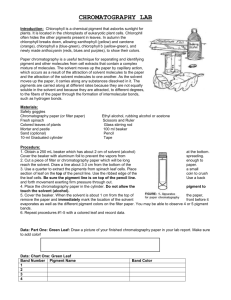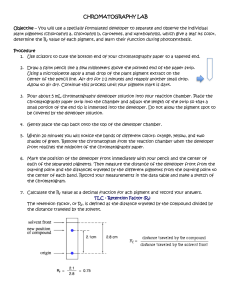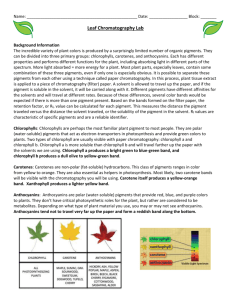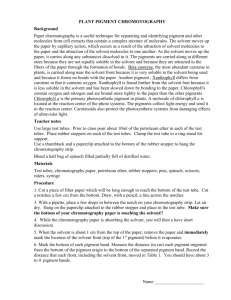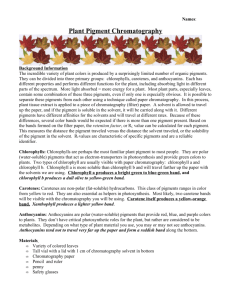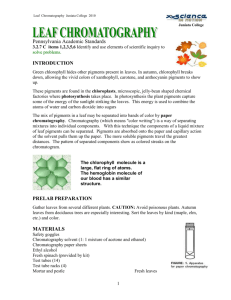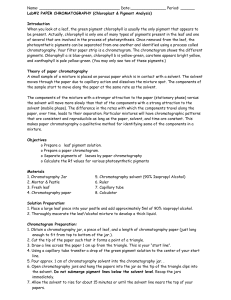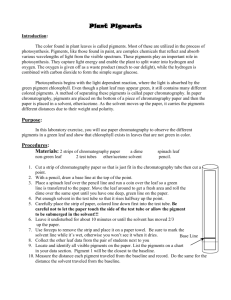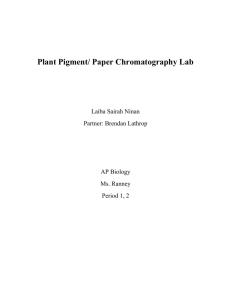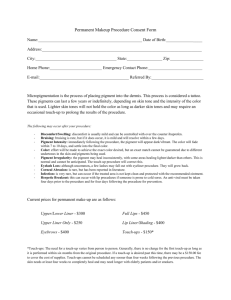AP LAB 4B
advertisement
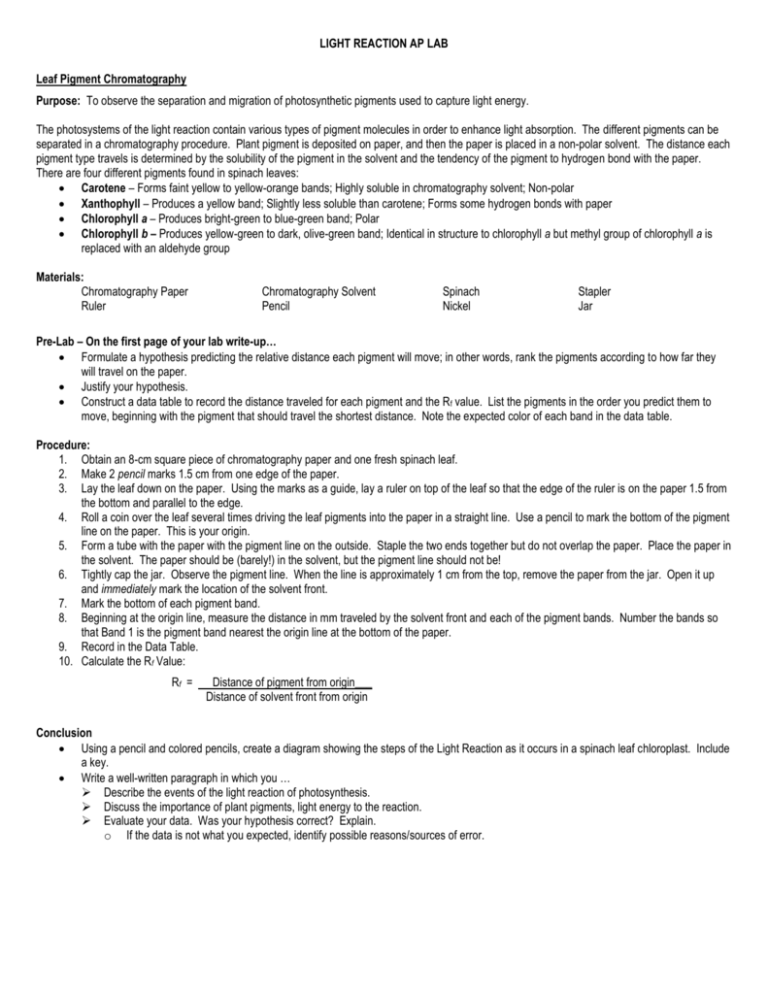
LIGHT REACTION AP LAB Leaf Pigment Chromatography Purpose: To observe the separation and migration of photosynthetic pigments used to capture light energy. The photosystems of the light reaction contain various types of pigment molecules in order to enhance light absorption. The different pigments can be separated in a chromatography procedure. Plant pigment is deposited on paper, and then the paper is placed in a non-polar solvent. The distance each pigment type travels is determined by the solubility of the pigment in the solvent and the tendency of the pigment to hydrogen bond with the paper. There are four different pigments found in spinach leaves: Carotene – Forms faint yellow to yellow-orange bands; Highly soluble in chromatography solvent; Non-polar Xanthophyll – Produces a yellow band; Slightly less soluble than carotene; Forms some hydrogen bonds with paper Chlorophyll a – Produces bright-green to blue-green band; Polar Chlorophyll b – Produces yellow-green to dark, olive-green band; Identical in structure to chlorophyll a but methyl group of chlorophyll a is replaced with an aldehyde group Materials: Chromatography Paper Ruler Chromatography Solvent Pencil Spinach Nickel Stapler Jar Pre-Lab – On the first page of your lab write-up… Formulate a hypothesis predicting the relative distance each pigment will move; in other words, rank the pigments according to how far they will travel on the paper. Justify your hypothesis. Construct a data table to record the distance traveled for each pigment and the Rf value. List the pigments in the order you predict them to move, beginning with the pigment that should travel the shortest distance. Note the expected color of each band in the data table. Procedure: 1. Obtain an 8-cm square piece of chromatography paper and one fresh spinach leaf. 2. Make 2 pencil marks 1.5 cm from one edge of the paper. 3. Lay the leaf down on the paper. Using the marks as a guide, lay a ruler on top of the leaf so that the edge of the ruler is on the paper 1.5 from the bottom and parallel to the edge. 4. Roll a coin over the leaf several times driving the leaf pigments into the paper in a straight line. Use a pencil to mark the bottom of the pigment line on the paper. This is your origin. 5. Form a tube with the paper with the pigment line on the outside. Staple the two ends together but do not overlap the paper. Place the paper in the solvent. The paper should be (barely!) in the solvent, but the pigment line should not be! 6. Tightly cap the jar. Observe the pigment line. When the line is approximately 1 cm from the top, remove the paper from the jar. Open it up and immediately mark the location of the solvent front. 7. Mark the bottom of each pigment band. 8. Beginning at the origin line, measure the distance in mm traveled by the solvent front and each of the pigment bands. Number the bands so that Band 1 is the pigment band nearest the origin line at the bottom of the paper. 9. Record in the Data Table. 10. Calculate the Rf Value: Rf = Distance of pigment from origin___ Distance of solvent front from origin Conclusion Using a pencil and colored pencils, create a diagram showing the steps of the Light Reaction as it occurs in a spinach leaf chloroplast. Include a key. Write a well-written paragraph in which you … Describe the events of the light reaction of photosynthesis. Discuss the importance of plant pigments, light energy to the reaction. Evaluate your data. Was your hypothesis correct? Explain. o If the data is not what you expected, identify possible reasons/sources of error.

